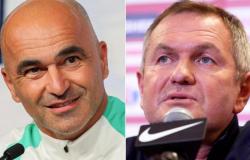What do the Datejust worn by Martin Luther King and the GMT Master worn by Brad Pitt have in common? First answer: they are both Rolex. Second answer: they are both made of gold. Then there would be a third response: they cost more and more. At least in Great Britain, where the Swiss giant has adjusted the price lists of its precious metal watches by 4% starting from last June 1st. A “turn of the crown” that brought the price list of the Daytona in white gold to 38,700 pounds (over 45,300 euros), while to now get your hands on a GMT Master II in yellow gold you need 34 thousand pounds, just under 40 thousand euros.
Completely unusual for the Geneva company, this is the second increase in prices of the year after the one decided (also on that occasion a +4%) at the beginning of January. Previously, only the fall of the pound in 2022, at the time of the Liz Truss government, had led Rolex to a two-fold price rise in the space of 12 months.
The break with a consolidated tradition can be traced first of all to the rise in gold prices, which rose by 14% in 2024 after reaching the historic peak in May of 2,450 dollars an ounce. Wars, assorted geo-political tensions and expectations linked to a rate cut by the Federal Reserve have fueled the prices of the noble metal, the safe haven par excellence in times of uncertainty. While expectations for monetary easing in the US have now receded, the Russian-Ukrainian conflict has instead entered a phase that does not exclude its possible escalation, while it still remains to be seen whether the truce between Israel and Hamas will be able to hold. Two elements that would favor the continuation of the gold rush. The British WisdomTree Investments has no doubts: prices will skyrocket up to $2,750 by March 2025.
Rolex’s move was therefore essentially aimed at safeguarding profit margins from possible increases in gold prices, without worrying too much about eroding the over 10 billion Swiss francs in consolidated revenues. In fact, defections on the part of customers are to be considered unlikely just because for a “Deepsea yellow gold” you now have to shell out 1,800 pounds more. In addition to the large financial resources of the army of fans, the fact that the demand for these watches far exceeds the annual supply of one million “pieces” also plays in favor of the company led by Jean-Frédéric Dufour, a “mismatch” which generates waiting times of around two years before receiving the object of desire. And this increases the rarity component, making a Rolex an even more coveted investment than a bullion. It is no coincidence that over the years its value has multiplied (provided it has never been worn and still wrapped in protective films), to the point of transforming it into an asset to be left to one’s heirs. The combination with gold can therefore be doubly successful.
Even more so if it is possible to exploit the collapse suffered by the franc against the euro and dollar in the last five months before the price increases extend beyond England. A Rolex is forever. An ingot depends.






